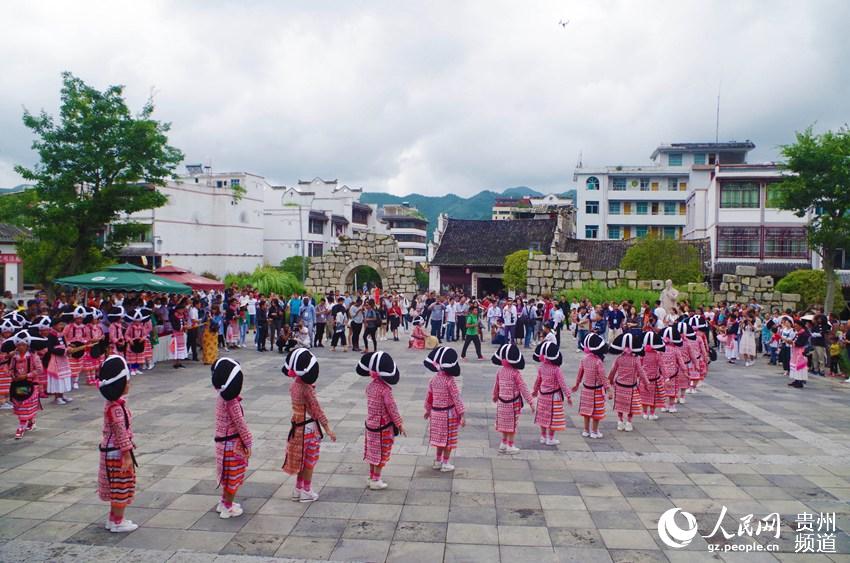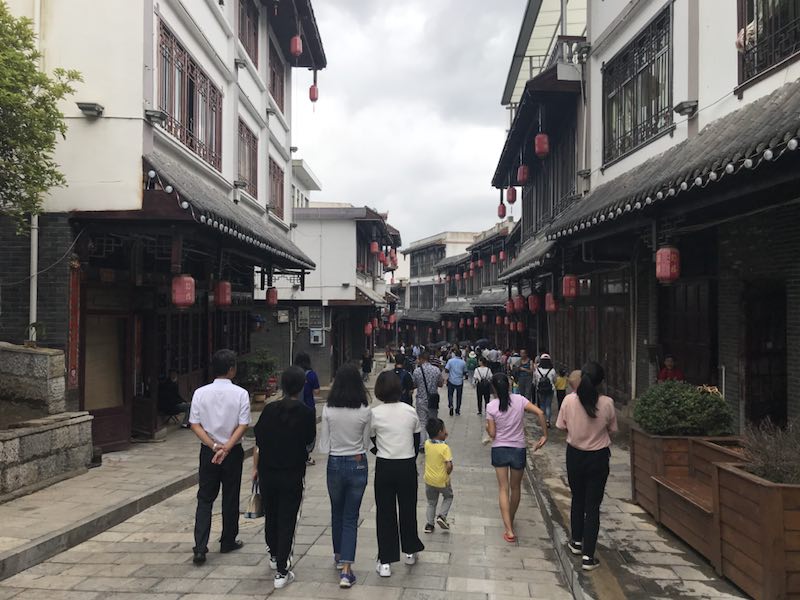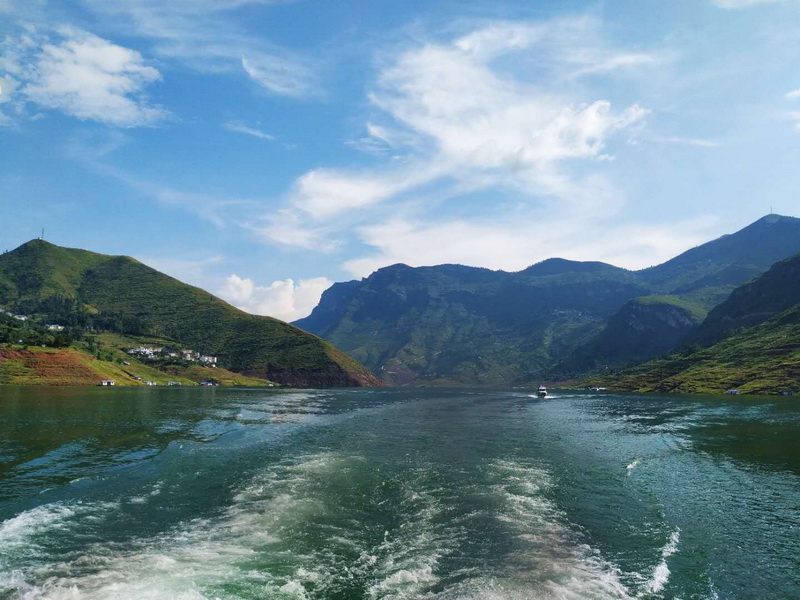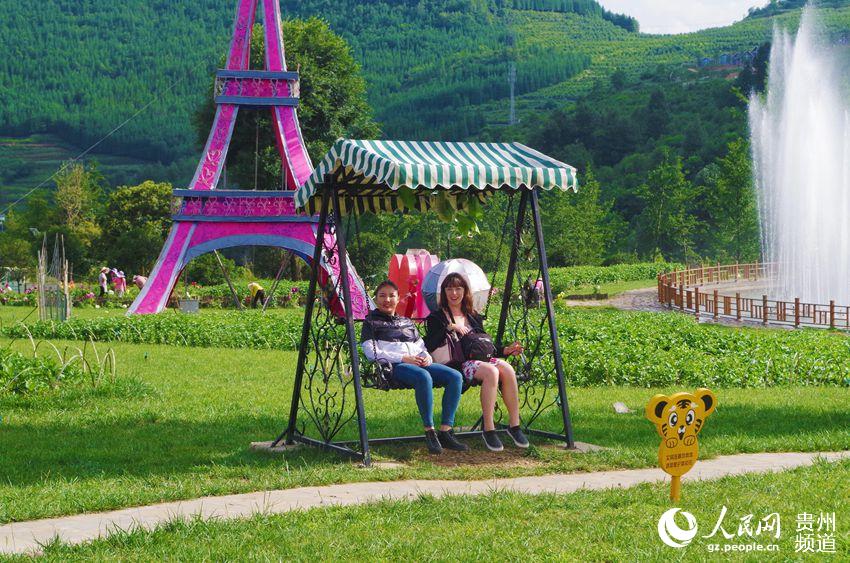Guizhou is leading the way as example of poverty alleviation through tourism
People's Daily Online
1533407335000

If you build it, they will come. The phrase could not be more apt than for the city of Liupanshui in Guizhou province, which through building a mammoth, interconnected tourism industry is lifting itself out of position as the poorest province in China.
After a week in Liupanshui city, it’s clear to see the vast improvements that are being made to entice people in and the vast mountain regions that mean visitors are sure to come flooding back. The people you meet here seem happy, and are proud to let you in on their unique culture and beautiful surroundings with broad smiles.

The wild jade sea scenic spot and Yi village is the perfect example of how cultural tourism will work in tandem with poverty alleviation in one of the 100 tourist scenic spots that Guizhou is currently planning or building. The government will help 169 groups amounting to 4,213 people who were previously sporadically placed or in small, poverty stricken villages, resettling poor households in nearby tourism service areas.
Therefore, villagers who previously had no income will be able to not only live in a new, purposefully made village but also gain employment in a new tourism hub. Tourism will not only include visiting the villages and scenic spots, but taking part in cultural activities such as welcome dances, bonfire parties and wine tasting. This model not only effectively solves the problem of people living in poverty, but also inherits and develops the national culture.

A finished version of a cultural heritage village is Langdai ancient town. The streets are crowded and children wearing cutesy t-shirts and eating snacks peer out of their doors curiously. This town is lived in, but it’s also a tourist destination. The merging of ancient culture and modern society is evident with a trip down Food Street, as you watch villagers make traditional rice cakes next to a child playing a game on their parent’s phone. Again, this town lives from an influx of tourists from Huangguoshu scenic spots and the Zangke River, which the government has purposefully regenerated to bring in more visitors.

The Zangke River scenic area is located to the north of the Panjiang river valley area, covering an area of 259 square kilometers. The steep rocky walls to either side of the river give way to beautiful green-blue water, rolling hills and tiny fishing villages. The only sound comes from the boat moving through the water and the distant knock, knock, knock, of another house being built. Locals from this peaceful area are making the best of the new scenic area.
“I used to work in the town as a clothing business and was barely able to support my family. Now I have a happy farmhouse and my income has increased tenfold," said Qiu Xiaoying, who used her savings to buy two speedboats to carry tourists along the river.
Agriculture feeding tourism
The government doesn’t merely rely on traditional culture and local scenery to get tourists interested. They are building ski slopes, cableways, paragliding centers – the list goes on. Cleverly creating a model where each industry feeds the next, no stone is left unturned when it comes to investing in the areas that will boost the region’s income.

As an area with obvious rich soil and extensive farmland, as well as a history of farming that goes back hundreds of years, the implementation of agricultural products that are specialized to the area and can be sold to tourists domestically and also exported was the next big challenge. Luckily, Guizhou has perfect conditions for the red hearted kiwi-fruit to grow, as well as blueberries, grapes, and a variety of other delicious options. These are popular with people near and far, with 6700 mu of kiwi fruit orchards being built with over 60 million yuan of investment in this farm alone. Not one to miss a trick, the area won’t only rely on selling to towns and cities home and abroad, but will also create its own tourism, with a sightseeing and fruit picking area, perfect for a family day out.
By going full circle, all industries in Guizhou are not only self sufficient, but also connect and support other tourism avenues, too. It’s through this type of clever thinking and investment that China will continue to win the fight against poverty and has a very real chance of completely eradicating the country’s poverty by 2020.


